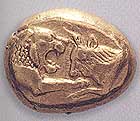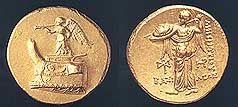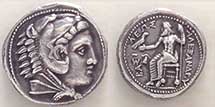
The first coins
Coins were being made in Lydia, a greek colony in Turkey, sometime before 600 BC. Electrum (a mixture of gold and silver) was made into pieces of exactly the same weight and purity. They were stamped by the goverment to certify this. Later, other Greek cities adopted their own coinage.

